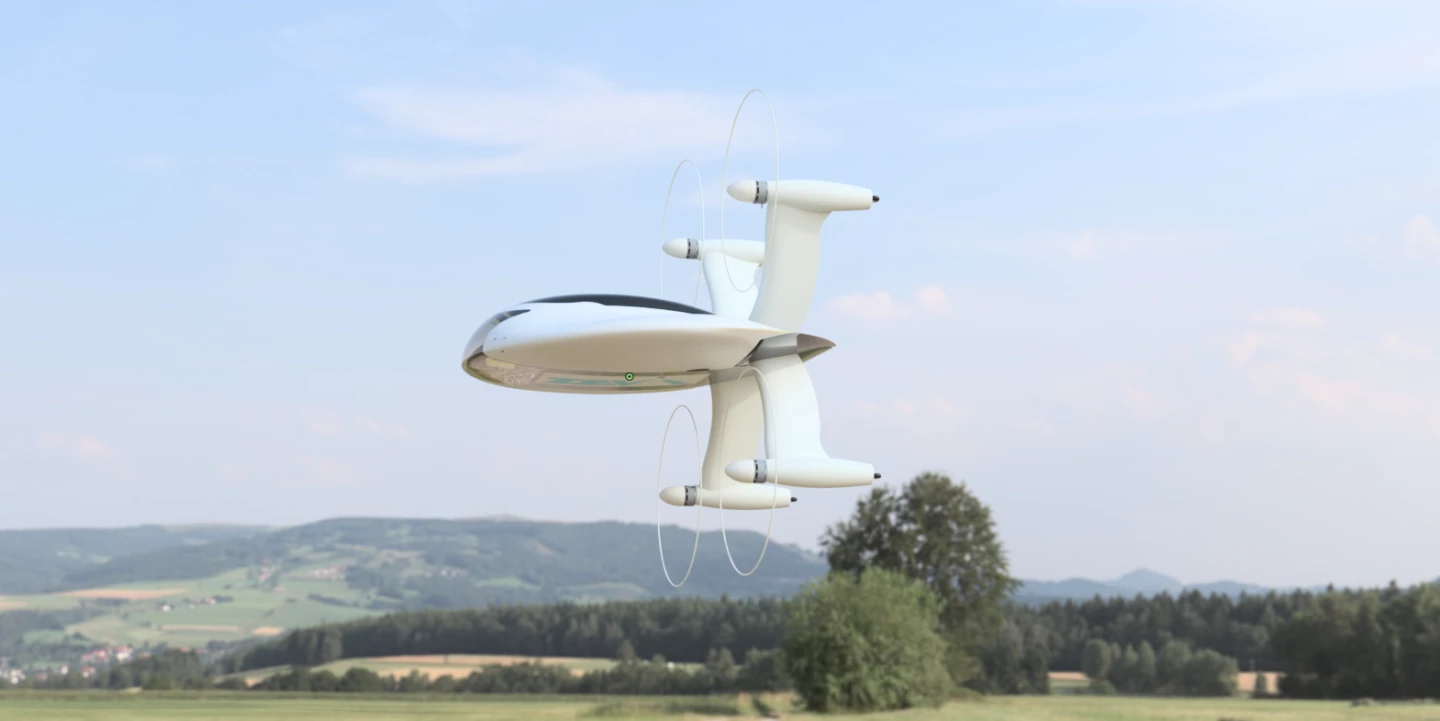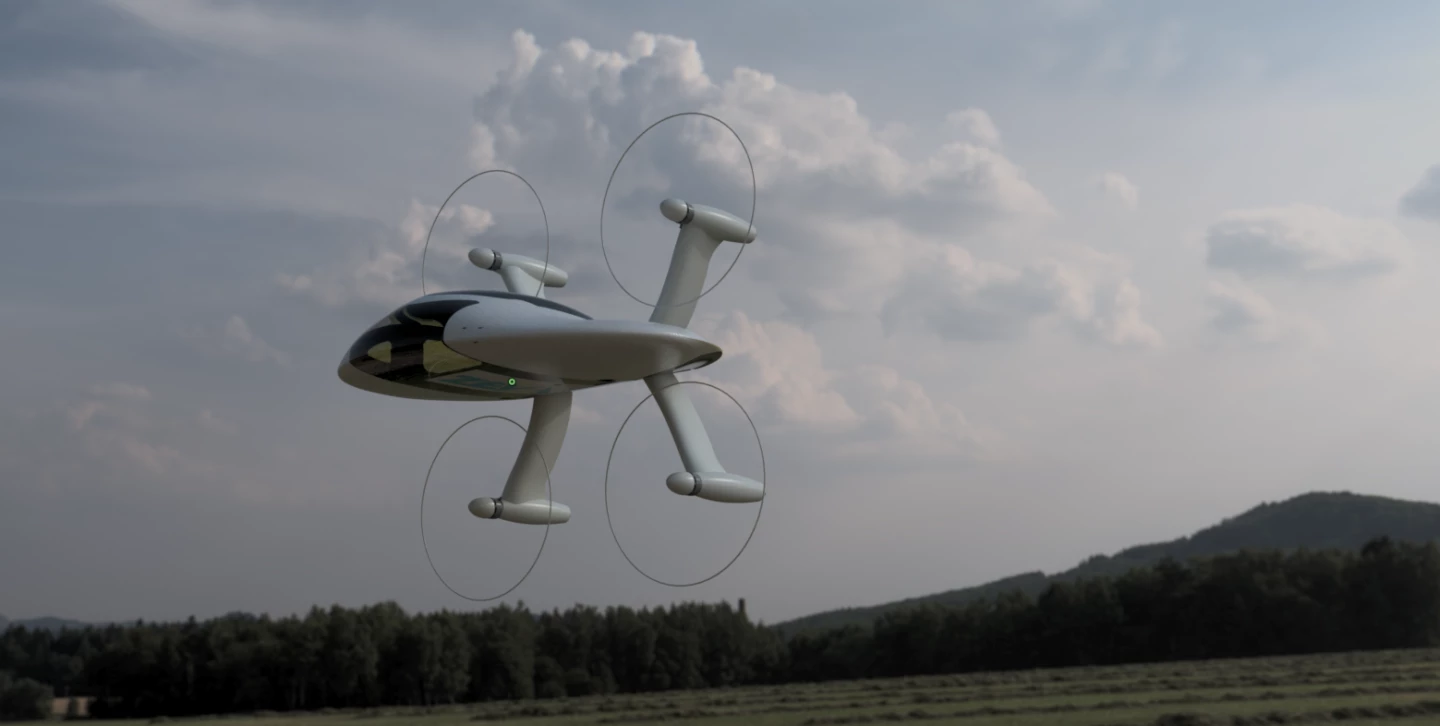Zeva is moving to prototype a second-generation version of its radically different take on eVTOL flight. The Z2 remains a tail-sitting flying saucer that flies a single person head-first at high speeds, but the new model makes some practical changes.
Zeva's approach might look a tad scary from the passenger perspective, and indeed, the experience of flying belly-down, Superman-style will certainly not be for everyone, but there's a practical purpose behind it. This tail-sitting design is one of the few small, single-pilot eVTOLs capable of achieving fast, efficient horizontal flight, and it does so without any of the complexity of tilting propulsion systems.
It rises vertically on four propellers, hovering and maneuvering like a drone. It tilts forward to move forward, and as speed increases, it tilts further and further forward until its wing-shaped body capsule develops enough lift for the aircraft to level out, with all its propulsion dedicated to forward thrust.
That gives it a top speed of 160 mph (257 km/h) – far quicker than any other eVTOL without tilting propulsion systems or some sort of lift and cruise arrangement. It also gives it a fairly respectable range somewhere over 50 miles (80 km), or around two minutes in hover and a 20-minute cruise flight, from a full charge of its 35-kWh battery pack.

As we discussed when we took our first goggle-eyed look at the Zeva eVTOL, this unique design approach has some other interesting advantages too; you can park a lot of them in a small space, you can fit a bunch into a shipping container, you can take off and land on a tiny piece of flat ground, and you can theoretically "SkyDock" them against the sides of skyscrapers, giving you a parking spot literally right outside your window if you've got the cojones to use it.
Zeva has been flying its first prototype since early January, and the company is now focusing on a second prototype that'll be closer to production-ready.
"The original Zero design was meant for the goFly prize," said ZEVA CEO Stephen Tibbitts over a video chat. "So it was highly constrained. So we asked ourselves what we really want to go to production with, and what are the issues we've encountered so far?"
"One of the issues, obviously, is that the landing gear is inadequate," he continued. "And we can have a lot more efficiency by swinging larger props. So we decided to combine the motor mounts with the landing gear, and spread the landing gear and motors out farther. So we can swing bigger props, get more efficient, and also have a much more stable platform on the ground. It helps with ingress and egress too; with the existing Zero, getting the hatch open and closed and getting a person in and out is pretty tight with where the propellers sit."

The Z2 will move to a different voltage, says Tibbitts, to lighten the internal wiring and get another little boost in efficiency. The project is still relatively early-stage, though.
"We've got a CAD design that's good enough to make renders with," he laughs. "And we've done some engineering work on the struts. But we haven't built tooling yet."
Indeed, through the local summer, Tibbitts has mainly been focused on raising funds, not only to get Z2 built and tested, but to put the machine into limited series production. He's making progress, he tells us, toward a US$15-million target, with a couple of US Government and military deals in the pipeline that validate Zeva's unique approach.
The company will likely sell the production eVTOL as an experimental aircraft, which could allow it to be used for certain emergency services work, as well as by private operators.
"That certainly cuts through a lot of FAA red tape, at least, initially," said Tibbitts." Our goal is to get to market as quickly as we can, and allow people to fly them as early as possible. We'll then work on the certification, when both we and the FAA are ready."
Check out the first flight of Zeva's original prototype in the video below.
Source: Zeva Aero










